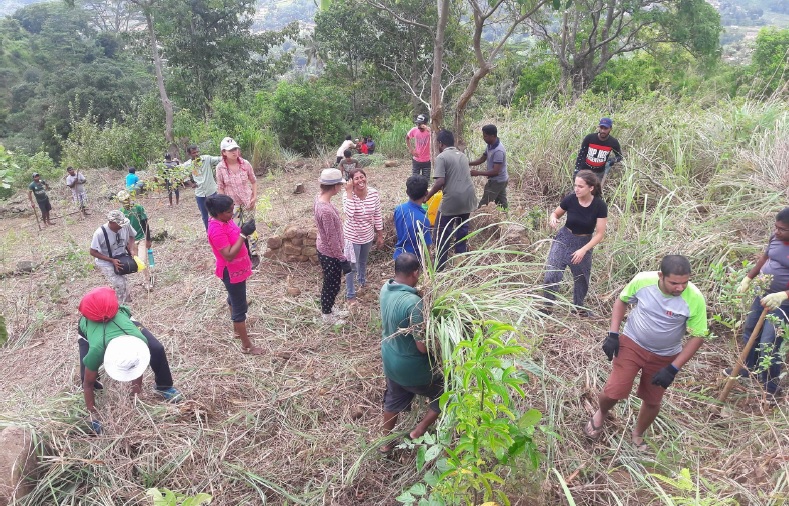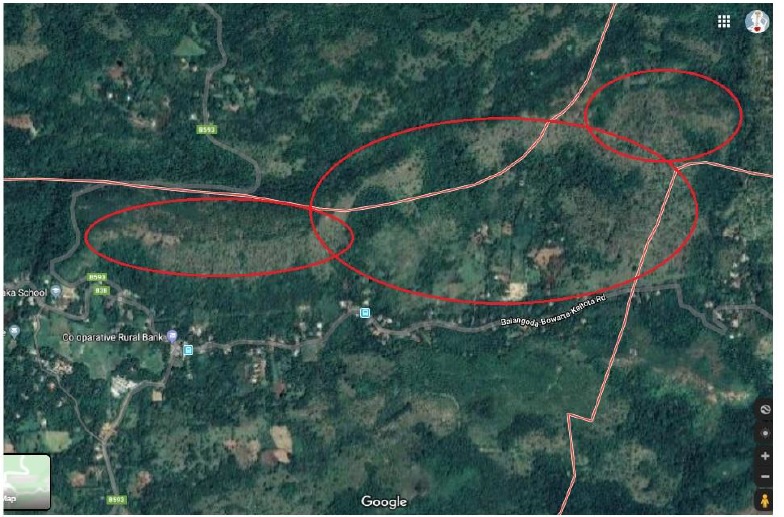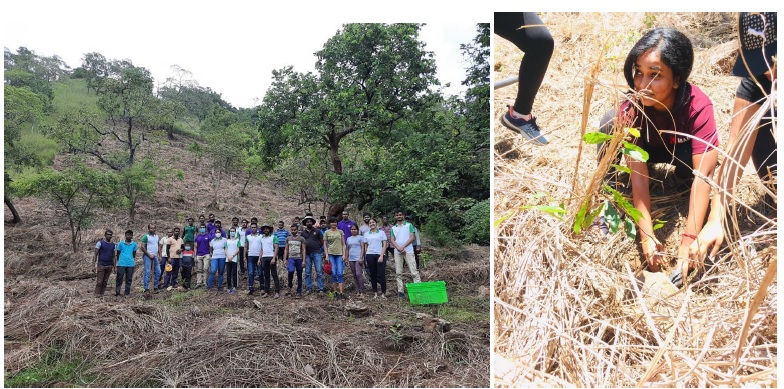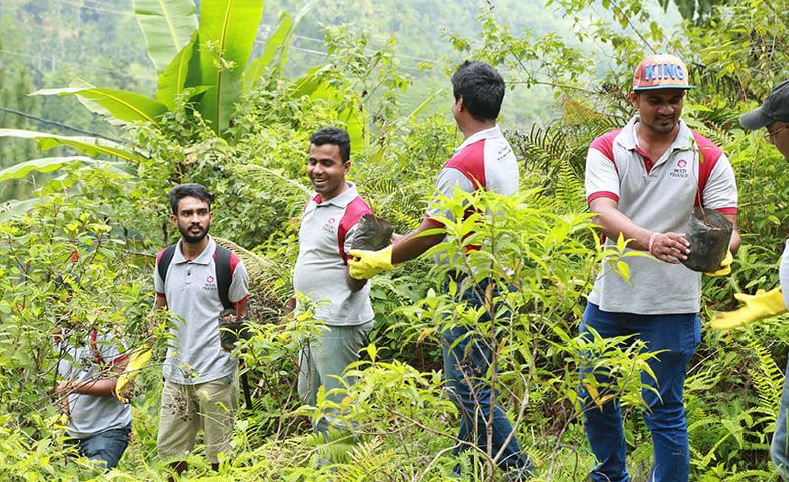Balangoda Restoration Project - Restoring Acre by Acre
(Transit Zone Between Udawalawa, Balangoda, Haldummulla to Welioya)

Overview
Rajawaka area is located on the border of wet zone and intermediate zone with a range of different landscapes, rich biodiversity from Elephants, leopards to plenty of natural bee colonies, different precious mineral resources and uniquely diverse ecosystems.Plenty of mountains and forest department-managed lands including other state forests are either scrub forests or grasslands full of “Maana” “Pangiri” or “Illuk”, which are highly invasive and fire friendly.
FACT - *** Annually the country loses about 10K Acres for man-made forest fires.
For decades, this grass/shrubland including mountains with important catchment blocks have been continuously burnt down by intentional man-made fires.
1) Need to encroach state/forest lands
2) To chase away elephants/leopards
3) Hunting and cattle grazing
4) Ignorance by chena cultivators
5) Forest produce collectors
Are the key reasons why the forests are burnt down every year, almost twice.
Frequent fires have caused extended droughts and water shortages to villagers, who are dependent on water streams and springs that originate from the hilltops for their daily consumption and agriculture.
Therefore, the project overall aims at reforesting a 500 acre block mapped and mentioned below for this purpose.

Goals
1) Improve and enhanced catchments2) Reduce frequency of fire & improve fire resistance
3) Improve overall forest cover in the area
4) Help biodiversity while reducing the HEC
5) To save millions of species dying due to fires
6) Provide different community benefits, including essential education on conservation importance
7) Improve overall water security
8) Long Term Carbon Benefits
9) High Microorganism activity and improved soil fertility
10) Home for pollinator colonies such as Bees and Hornets
Land Ownership
The proposed restoration site belongs to the Department of forest conservation. An MOU is signed between Department of Forest Conservation (DFC) & Rainforest Protectors of Sri Lanka to reforest the area under "WANAROPA" initiative focussing on achieving 200K ha BONN challenge.Project Activities

1) Site preparation by removing invasive species (Maana), An acre can facilitate from an average of 500 plants to maximum up to0 1000 Plants.
2) Putting up a removable drip irrigation system to irrigate 5 acres each once.
3) Purchasing saplings to be planted, 500 - 1000 plants per acre.
NOTE - Costs of Plants can be significantly reduced by getting your staff to volunteer for forest/fruit plants. Transportation cost can be reduced totally if you can source your own vehicles. Any of the above components can be replaced with volunteer support/using own resources if/when available.
4) Transportation of Plants to the planting site - Variable
5) Laborers to help carry plants to the planting site (Volunteers can do this part if they are physically fit). 2 Laborers can carry 50 Plants a day. 6) Refreshments (Variable depending on the level of paid laborers and volunteer contribution/frequency)
(YOU CAN CALCULATE COSTS AS STATED ABOVE BASED ON THE ACRES YOU WANT TO REFOREST/RESTORE)
Species Selection
You will be planting endemic & native trees, which will help biodiversity thrive and attract wildlife. Additionally, various fruit species will be planted for the benefit of wildlife. Finally, rare herbs will be introduced as underbrush once a canopy is created. Species selection will be purely on an “In Situ” basis, except in the case of enriching wildlife.Tentative Plant List
Table 1 - Priority Plant List
| Aralu | Daminna | Atamba | Kolon | Hal | Kithul |
| Bulu | Koon | Mango | Kohomba | Hora | Pani Maran |
| Nelli | Mora | Mee | Kaluwara | Beraliya | Puwak |
| Kahata | Kaju | Kos | Kumbuk | Dun | Ambilla |
| Gammalu | Maadan | Siyambala | Sudu handun | Karanda | Goraka |
| Duhundu | Damba | Dorana | Wedanghu | Ugurassa Kanda |
Community Mobilization and Partnership

Community plays a big strategic, management and operational part of the entire project in terms of the project rationale, project implementation and project success. Not to mention, project monitoring and project benefits are closely connected to the community living around the Rajawaka Forest Reserve.
Ways in which the community will get involved in the project.
1) As laborers in ground preparation for field work (Pre project and at implementation stage)
2) Raising and maintaining saplings required for the restoration, which will be bought at a reasonable price (Plant Nurseries)
3) As suppliers of food and refreshments for volunteers/visitors/workers & caretakers.
4) Homestay opportunities. (Provide homestay facilities to local and foreign volunteers who wish to spend a weekend or work long term on the project site)
5) Some of the villagers will be hired as Maintenance and caretaker staff
6) Promote community as guardians of these community forests
7) Education and awareness on importance on ecosystem restoration and forest conservation
8) Reduced Human Elephant, Human Monkey and Human Wildlife conflict
9) Making children and schoolchildren in the surrounding communities part of the project and future guardians.
10) Opportunities for communities to sell “allowed” forest products, home garden produce, vegetables and other products to connected stakeholders visiting the site on a regular basis.
Additional Benefits
1) Put an end to annual fires2) Get the community involved in the reforestation activity and make them sensitize, understand the value of conserving forests.
3) Creating a wildlife heaven
4) Rejuvenate lost streams, springs and greenery.
5) Make it a haven for wildlife by introducing wild fruit and other fruit forestry components.
6) Ensure community benefits such as food and other commercially valuable products by introducing such species in the bordering areas. I.E - Jack, Kithul and Valuable fruits
7) Make it a model forest for schools/university students to carry out research/case study.
8) Plant rare herbals for communities to benefit
Long Term Benefits
1) Carbon Absorption (Carbon Sink)2) Ecosystem Service
3) Photosynthesis/evapotranspiration and contribution to water cycle
4) Biodiversity benefits (Including pollinators and home for pests, reducing crop damage)
5) Soil fertility/Water holding capacity
6) Reduce temperature
7) More rain
Location
https://www.google.com/maps/place/Rajawaka/@6.611762,80.8093625,602m/data=!3m1!1e3!4m5!3 m4!1s0x3ae3f58896b32135:0x443679eebbfbf4b6!8m2!3d6.6053963!4d80.798408Contact Details
Tel: 0777771348Essential for Volunteers
1. Covered footwear/socks or sandals2. Clothing: Long trousers and preferably long sleeves
3. Hat and sun protection as required
4. Basic accommodation is provided, FOC. (Sleeping mat, sheets, sleeping bag if planning to camp outdoors overnight
5. Gloves
Call Jayantha Wijesingha on +(94) 777771348 or email at sajwijesingha@gmail.com for more information